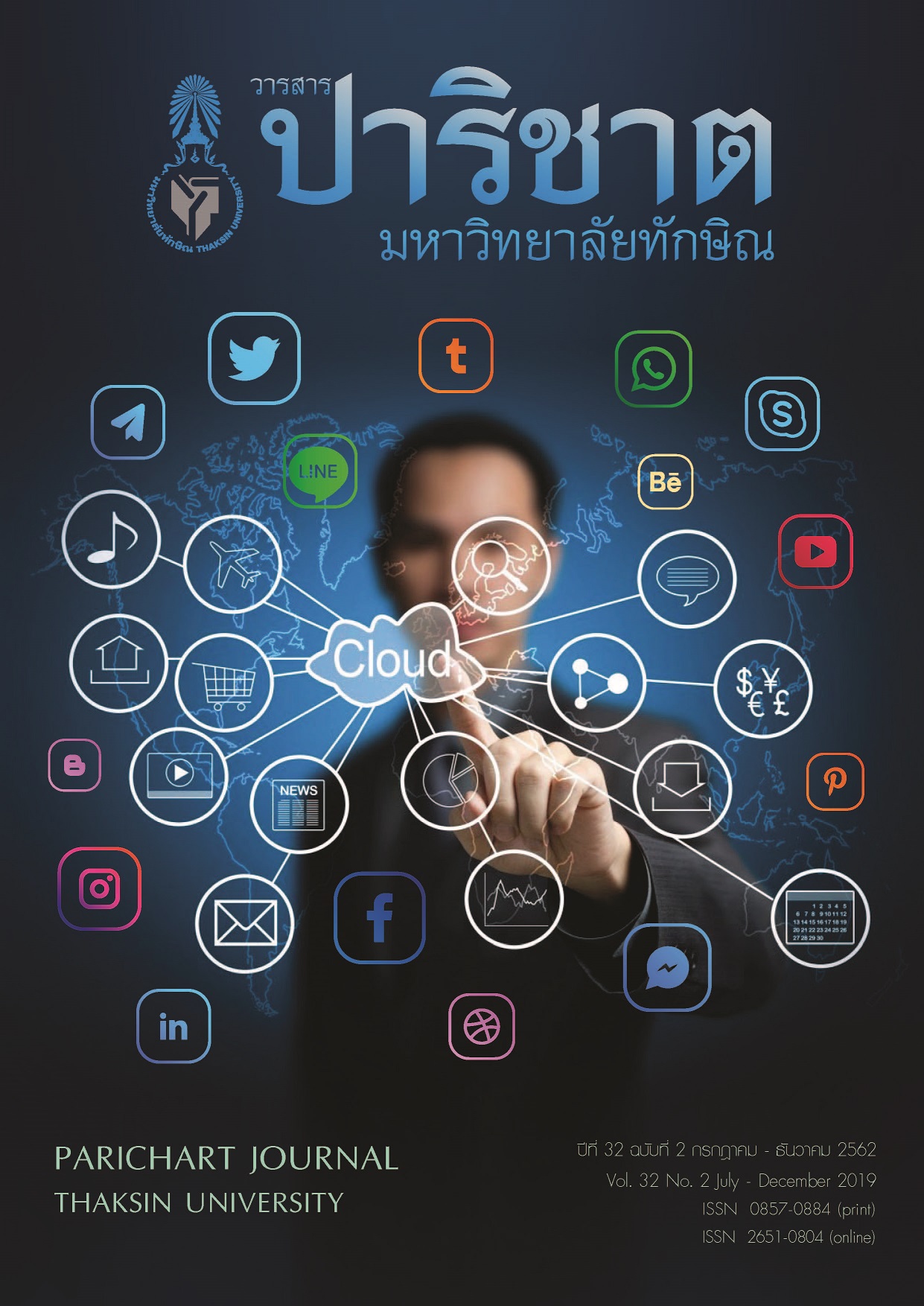Social Paradigms on the Status and Role of the Elderly
Main Article Content
Abstract
This article aimed to describe the social paradigm shift towards the status and roles of the elderly. For decades, the process of modernization has promoted a negative stereotype about the elderly in the society. People in the modern society mostly value economic growth and success. As a result, the elderly are monitored for the balance of costs and reciprocity in the exchange relationship. Accordingly, the elderly are often seen as burdensome. However, this myth about the elderly is challenged by a new paradigm that focuses on people-centred development and human security. The concept of “Active Ageing” consists of two basic principles: (1) Humanitarian Aspect of Ageing, means that the elderly’s basic rights and needs should be protected. The social norms should take a stand against discrimination, (2) Developmental Aspect of Ageing, means that the elderly are potential for social and economic contribution. A promotion plan for elderly’s participation in productive ageing activities is necessary. Nowadays, the national policies for the aging population in Thailand have adopted the concept of active ageing. This is for the well-being of the Thai elderly.
Article Details
References
[2] Cowgill, D. (1974). Aging and modernization: A revision of the theory. In J.F.Gubrium (Ed.), Late Life: Communities and Environmental Policy (pp.123-146). Spingfield IL: Charles C. Thomas.
[3] Palmore, E., & Manton, K. (1974). Modernization and the status of the aged: International comparisons. Journal of Gerontology, 29(1), 205-210.
[4] Watson, W.H., & Maxwell, R.J. (Eds.). (1977). Human aging and dying: A study in sociocultural gerontology.
New York: St. Martin’s Press.
[5] Simmons, L.W. (1945). The role of the aged in primitive society. New Haven: Yale University Press.
[6] Cowgill, D. (1972). The role and status of the aged in Thailand. In D. O. Cowgill, & L. D. Holmes (Eds.), Aging and modernization (pp. 91-102). New York: Appleton-Century-Crofts.
[7] Amoss, P. (1981). Coast Salish elders. In P.T. Amoss & S. Harrell (Eds.), Other ways of growing old:
Anthropological perspectives (pp. 227-247). Stanford CA: Stanford University Press.
[8] Blenkner, M. (1965). Social work and family relationships in later life with some thoughts on filial maturity. In
E. Shanas, & G. F. Streib (Eds.), Social Structure and the Family: Generational Relations (pp. 117-130). Englewood Cliffs, NJ: Prentice Hall.
[9] UNDP. (1994). Human development report 1994. New York: Oxford University Press. Retrieved on October 9, 2018,
from https://hdr.undp.org/sites/default/files/reports/255/hdr_1994_en_complete_nostats.pdf.
[10] Sasat, S. (2016). Ageism: What people in the society should be concerned. Journal of Gerontology and
Geriatric Medicine, 15(3), 60-66. (In Thai)
[11] Yodpetch, S., Patanasri, P., & Sakdaporn, T. (2017). The Research on good lessons learned from schools and clubs for older persons with knowledge transfer activities. Bangkok: The Foundation of Thai Gerontology Research and Development Institute. (In Thai)
[12] United Nations, Department of Economic and Social Affairs, Population Division. (2016). World population
prospect, the 2015 Revision. New York: United Nations.
[13] The Foundation of Thai Gerontology Research and Development Institute. (2016). Situation of the Thai elderly 2016. Bangkok: Thai National Committee of Senior Citizens and the Institute for Population and Social Research, Mahidol University. Retrieved on October 9, 2018, from https://thaitgri.org/?p=38427. (In Thai)
[14] Kamonchanok Pumechat, Pricha Samakkhi., & Lunjakon Nillakan. (2018). A Model of the elder-friendly prototype community. Inthaninthaksin Journal Thaksin University, 13(1), 115-132. (In Thai) Retrieved on October 9, 2018, from https://www.huso.tsu.ac.th/huso_mag/journal/1301/130105DT.pdf.
[15] National Statistical Office. (2018). Working situation of the elderly in Thailand report 2018. Bangkok: National Statistical Office. (In Thai)
[16] World Health Organization. (2002). Active aging, a policy framework. A contribution of the world health
organization to the second united nation world assembly on ageing, Madrid, Spain, April. Retrieved on October 9, 2018, from https://www.who.int/ageing/publications/active_ageing/en/.
[17] Jitapunkul, S., & Wivatvanit, S. (2008). National policies and programs for the aging population in Thailand.
Ageing International, 33(1-4), 62-74. Retrieved on October 9, 2018, from https://link.springer.com/article/10.1007/s12126-009-9027-6
[18] Thai National Council on Research and Innovation Policy. (2017). Thailand 20-year national strategy
framework (2017- 2036). Bangkok: Cocoon & Co. (In Thai)
[19] Tamdee, P. (2017). Agency, society and culture: Conditions promoting active ageing in older persons in
Chiang Mai. Journal of Social Sciences, 47(2), 109-131. (In Thai)
[20] Seangthong, J. (2015). The self-esteem of older people through volunteer roles. Walailak Abode of Culture Journal, 15(2), 73-89.
[21] Thanakwang, K., Isaramalai, S., & Hattakit, U. (2014). Thai cultural understandings of active ageing from the perspectives of older adults: A qualitative study. Pacific Rim International Journal of Nursing Research, 18(2), 152-165.

